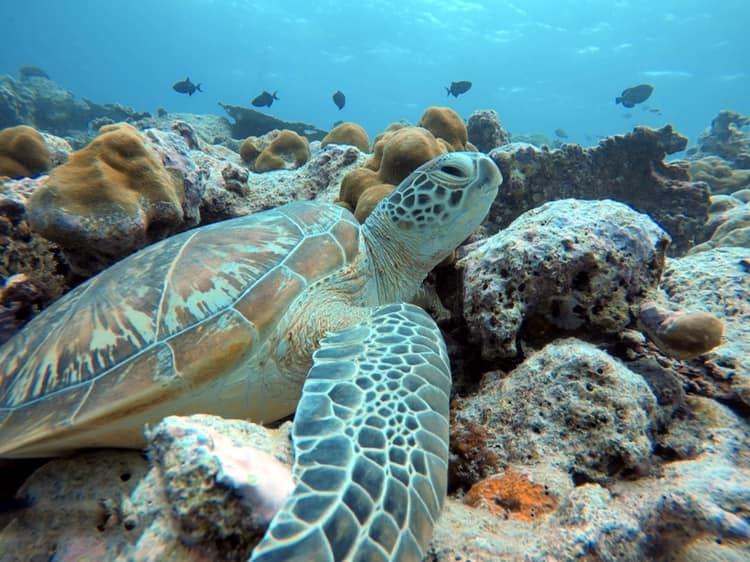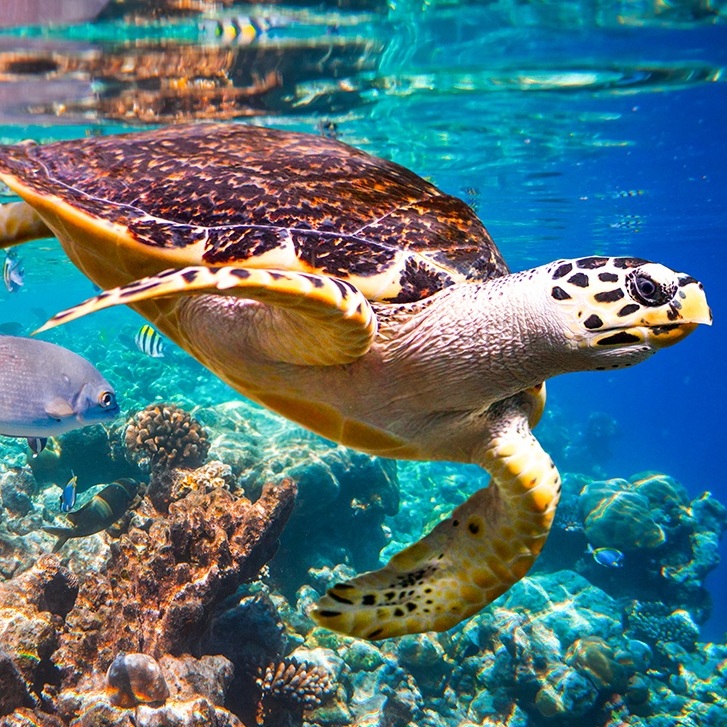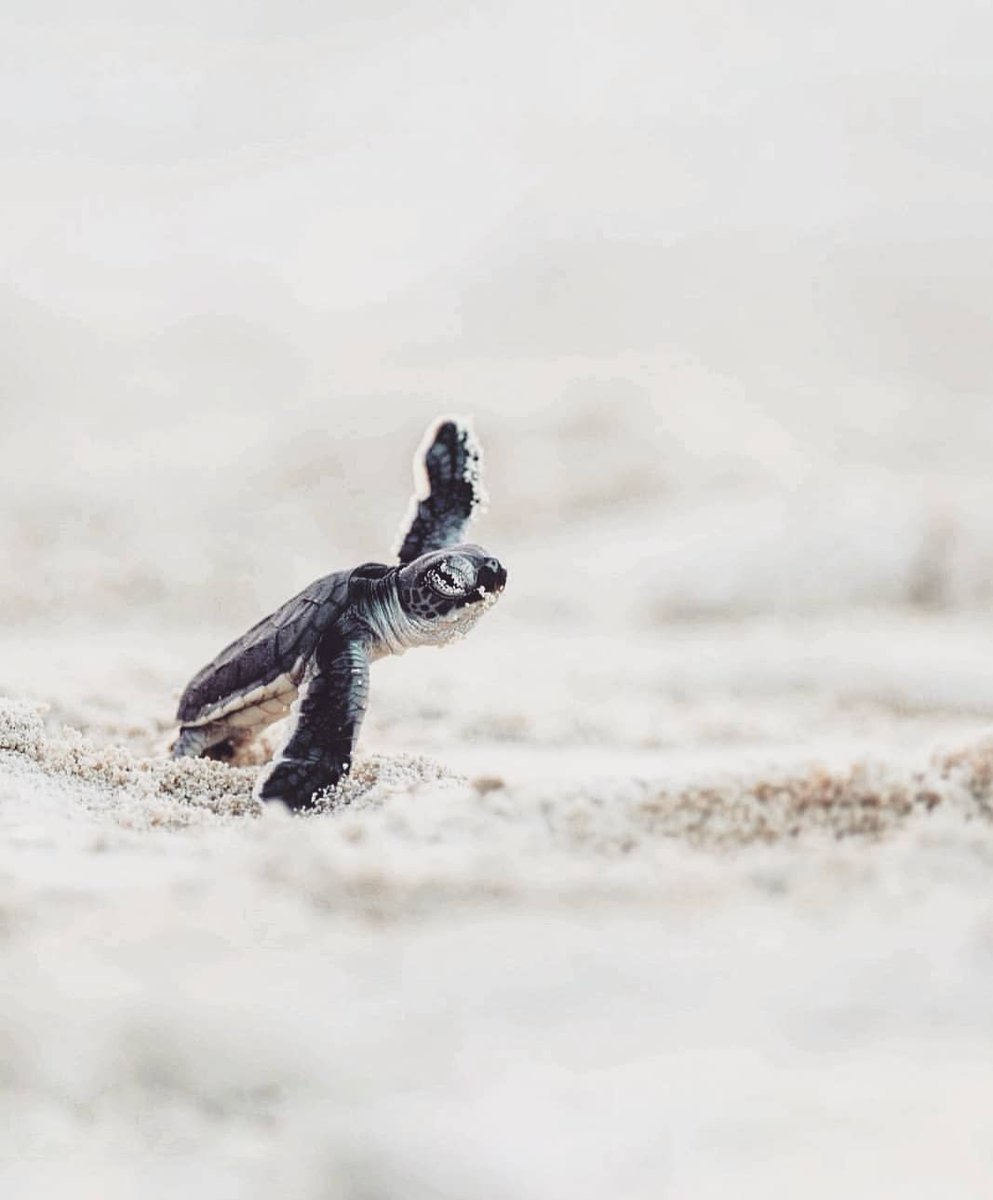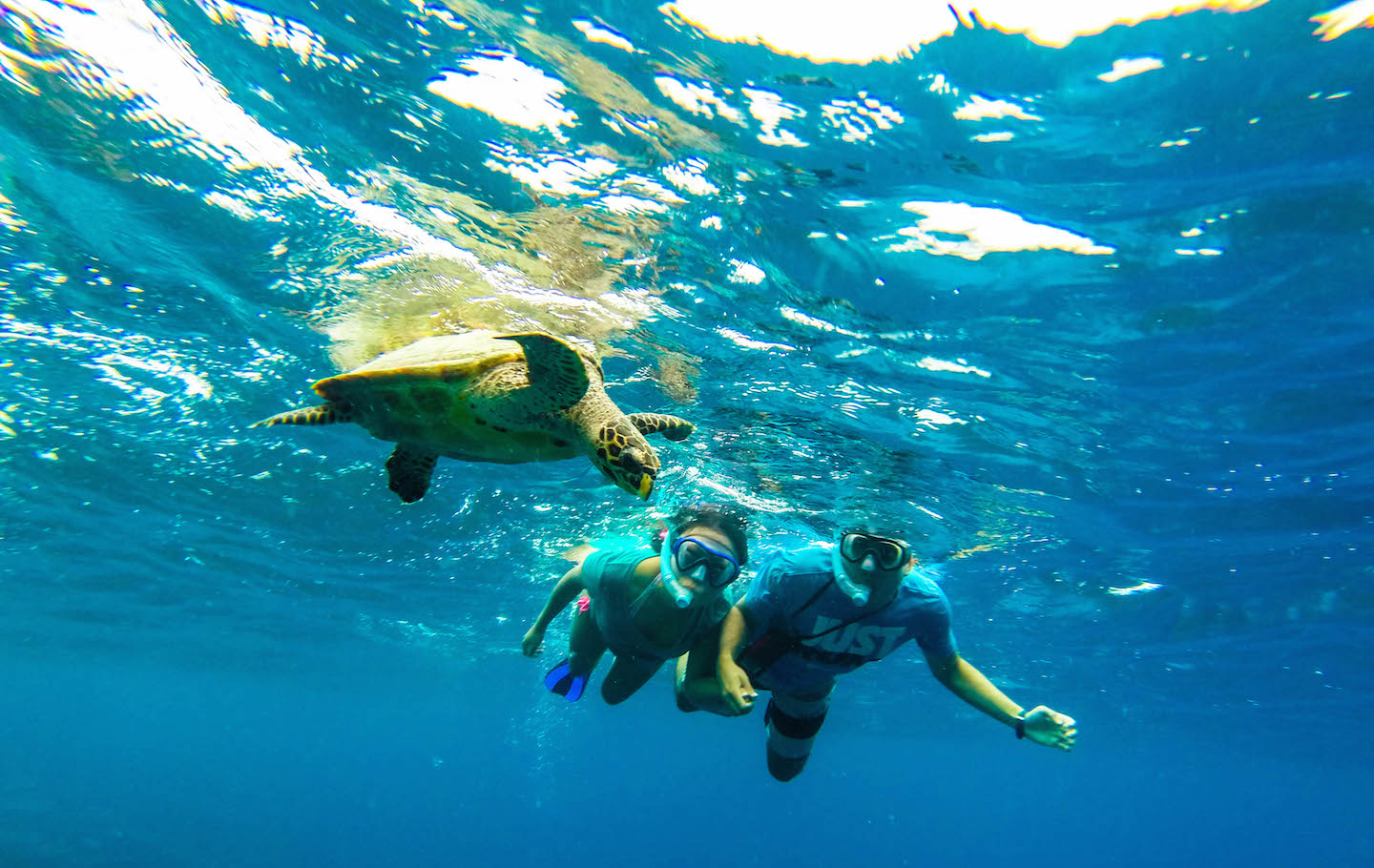Would you like to name a sea turtle?
During a stay at Ayada Maldives it is highly likely that you will spot a few sea turtles whilst swimming, diving or snorkeling in the crystal clear waters around the resort. They gracefully glide up to the surface for a breath of air before gliding back into their underwater world and are totally mesmerizing to watch. They are often so close that you can get a really good look at their features and this will help to identify which species of sea turtle you’ve been lucky enough to see.
Five of the seven species of sea turtles in the world can be found in the waters around the Maldives. The Green sea turtle and the Hawksbill are two of the more frequently seen species.
So how can you tell which species you’ve seen?
The Hawksbill has a narrow & pointed upper jaw overhanging the lower jaw, it also has one claw on each front flipper. Whereas the Green sea turtle has a more rounded jaw, the lower jaw is serrated and it has two claws on each front flipper.
If you spot a turtle that doesn’t match either of the above key identifiers, chances are you may have spotted one of the more rarer turtles found in the Maldives: an Olive Ridley, Loggerhead or Leatherback.
Now you know a little more about sea turtles, would you like the opportunity of naming one?
Just snap a couple of pictures while you out snorkeling or diving and send them to us using Facebook or Instagram.
We will check your pictures against the Maldivian Turtle database and if your turtle is not currently listed, you will be given the chance to name it!
Your photos must be in high resolution and clearly show both sides of the turtles head as well as a full body picture in order for it to be identified. Please also include an estimation of size, plus the date and location of the sighting.
Turtle Etiquette
The sea turtles around the resort are not shy, sometimes even a little inquisitive. Please respect and give them space, allow them to decide how close an encounter they want.
Above all, never touch, chase or try to ride them. This is extremely threatening to the turtles and would make them wary of humans, therefore making future sightings more unlikely.





